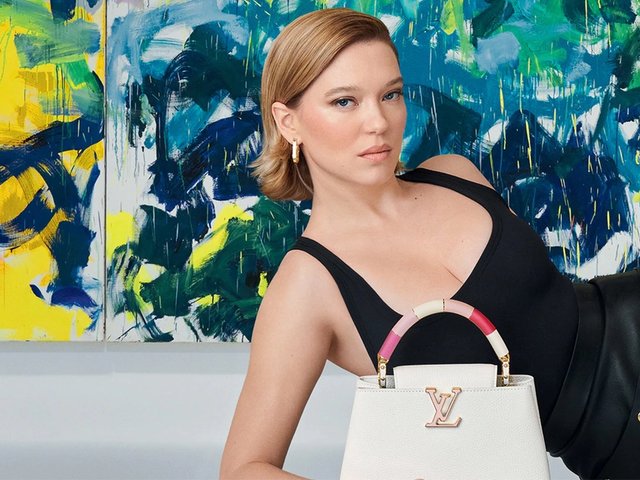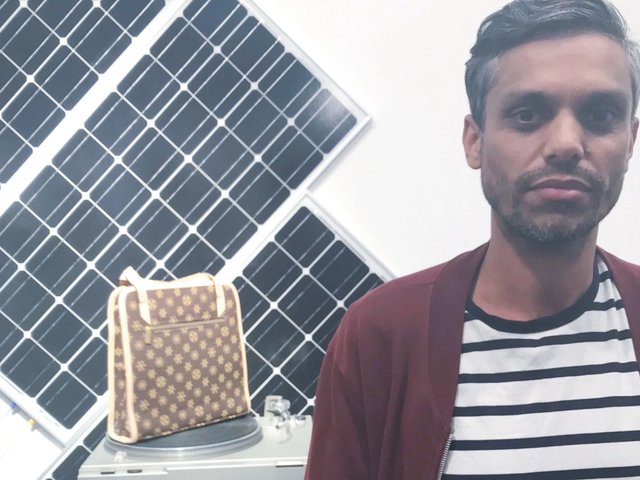The French fashion company Louis Vuitton allegedly threatened to destroy the career of the Danish artist Nadia Plesner if she did not stop using the company’s products in her works of art.
In a book entitled Simple Living, published in Denmark in May, Plesner gives her account of her three-year legal battle with the luxury goods company. “If you do not stop your campaign immediately, your artistic career will end here. You will never exhibit in a single gallery or museum in your life,” Plesner claims a lawyer for the company told her.
In 2007, the artist designed a T-shirt illustrated with an emaciated African child carrying a chihuahua and a Louis Vuitton handbag that was intended to raise awareness of the humanitarian crisis in Darfur. Although she changed the Louis Vuitton logo in her picture, the bag she depicted was clearly recognisable as one designed by the Japanese artist Takashi Murakami for the company in 2002.
She sold the T-shirts on her website to raise funds for Sudan. Although she was warned to stop selling the garments by Louis Vuitton she refused and the company then sued her for copyright infringement in France. In April 2008, a judge in Paris issued an ex parte court order, a decree that does not require the presence of all parties in a dispute. The terms of this, issued in Plesner’s absence, stipulated that she should immediately stop selling her T-shirts online. Plesner would be charged €5,000 for every day she continued the online sales, a further €5,000 for each day she published her original drawing online and an additional €5,000 a day if she publicised the terms of the court order.
When she did not comply with these terms, Louis Vuitton invited her to a meeting to discuss the ongoing dispute. At this encounter, which took place at the company’s Paris headquarters in May 2008, Plesner was first offered an incentive to stop using the offending drawing. “For a young artist like you it can be a really good idea to be friends with us,” a representative of the company apparently told her, according to her published account. When she declined the offer, the company threatened her, the book alleges. “The power we can use to support your career, we can of course also use for the opposite means,” a lawyer for the company allegedly said. By reporting these events in her book, Plesner appears to be breaching the non-disclosure agreement she signed at the start of this meeting.
“This story needs to be told,“ Plesner tells The Art Newspaper, adding that the way Louis Vuitton tried to block her work has to be disclosed as companies are endangering freedom of expression. “In Denmark we talk a lot about the drawings of the prophet Mohammed when we discuss artistic freedom, but there are many more cases where artists might be stopped from expressing themselves,“ she says, adding that whatever artists want to draw or paint should be allowed—even if it makes reference to a known product or company. “I hope my case can shed a bit more light on how intellectual property rights have been used to lim it art,” she says.
Plesner also says that her work was never intended to harm Louis Vuitton. The company’s bag was just a symbol of the lack of interest in humanitarian crises such as the one in Darfur. She made the work in response to a newspaper's coverage of Darfur: a short article relegated to a back page. On the same day, the socialite Paris Hilton, sporting her chihuahua and Louis Vuitton handbag, were given much more space in the same newspaper.
After the 2008 meeting with Louis Vuitton, Plesner decided to discontinue the sales of her T-shirt, but she did not publicly apologise to the company as she had been asked to do. Louis Vuitton then dropped its demands for a penalty to be imposed on the artist.
In 2011, Plesner used a Louis Vuitton handbag in another work and was again sued, this time in The Hague. Another ex parte decree was issued, ordering the artist to pay €5,000 for each day she showed the work. In May 2011, she counter-sued to have this penalty annulled and for the right to show her work. She won her case and is now free to show the work without fear of repercussions. Louis Vuitton declined to comment.




